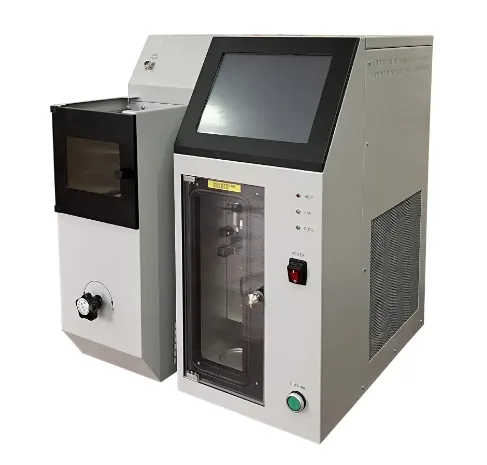 English
English



-
 Afrikaans
Afrikaans -
 Albanian
Albanian -
 Amharic
Amharic -
 Arabic
Arabic -
 Armenian
Armenian -
 Azerbaijani
Azerbaijani -
 Basque
Basque -
 Belarusian
Belarusian -
 Bengali
Bengali -
 Bosnian
Bosnian -
 Bulgarian
Bulgarian -
 Catalan
Catalan -
 Cebuano
Cebuano -
 China
China -
 China (Taiwan)
China (Taiwan) -
 Corsican
Corsican -
 Croatian
Croatian -
 Czech
Czech -
 Danish
Danish -
 Dutch
Dutch -
 English
English -
 Esperanto
Esperanto -
 Estonian
Estonian -
 Finnish
Finnish -
 French
French -
 Frisian
Frisian -
 Galician
Galician -
 Georgian
Georgian -
 German
German -
 Greek
Greek -
 Gujarati
Gujarati -
 Haitian Creole
Haitian Creole -
 hausa
hausa -
 hawaiian
hawaiian -
 Hebrew
Hebrew -
 Hindi
Hindi -
 Miao
Miao -
 Hungarian
Hungarian -
 Icelandic
Icelandic -
 igbo
igbo -
 Indonesian
Indonesian -
 irish
irish -
 Italian
Italian -
 Japanese
Japanese -
 Javanese
Javanese -
 Kannada
Kannada -
 kazakh
kazakh -
 Khmer
Khmer -
 Rwandese
Rwandese -
 Korean
Korean -
 Kurdish
Kurdish -
 Kyrgyz
Kyrgyz -
 Lao
Lao -
 Latin
Latin -
 Latvian
Latvian -
 Lithuanian
Lithuanian -
 Luxembourgish
Luxembourgish -
 Macedonian
Macedonian -
 Malgashi
Malgashi -
 Malay
Malay -
 Malayalam
Malayalam -
 Maltese
Maltese -
 Maori
Maori -
 Marathi
Marathi -
 Mongolian
Mongolian -
 Myanmar
Myanmar -
 Nepali
Nepali -
 Norwegian
Norwegian -
 Norwegian
Norwegian -
 Occitan
Occitan -
 Pashto
Pashto -
 Persian
Persian -
 Polish
Polish -
 Portuguese
Portuguese -
 Punjabi
Punjabi -
 Romanian
Romanian -
 Russian
Russian -
 Samoan
Samoan -
 Scottish Gaelic
Scottish Gaelic -
 Serbian
Serbian -
 Sesotho
Sesotho -
 Shona
Shona -
 Sindhi
Sindhi -
 Sinhala
Sinhala -
 Slovak
Slovak -
 Slovenian
Slovenian -
 Somali
Somali -
 Spanish
Spanish -
 Sundanese
Sundanese -
 Swahili
Swahili -
 Swedish
Swedish -
 Tagalog
Tagalog -
 Tajik
Tajik -
 Tamil
Tamil -
 Tatar
Tatar -
 Telugu
Telugu -
 Thai
Thai -
 Turkish
Turkish -
 Turkmen
Turkmen -
 Ukrainian
Ukrainian -
 Urdu
Urdu -
 Uighur
Uighur -
 Uzbek
Uzbek -
 Vietnamese
Vietnamese -
 Welsh
Welsh -
 Bantu
Bantu -
 Yiddish
Yiddish -
 Yoruba
Yoruba -
 Zulu
Zulu
Circuit Breaker Load Testers Precision Testing & Safety Solutions
- Overview of Circuit Breaker Load Testing
- Critical Technical Advantages
- Performance Comparison: Leading Manufacturers
- Customized Solutions for Industrial Demands
- Real-World Application Scenarios
- Maintenance and Calibration Best Practices
- Future Trends in Circuit Breaker Testing

(circuit breaker load tester)
Understanding Circuit Breaker Load Tester Fundamentals
Circuit breaker load testers validate electrical interruption capacities under controlled overload conditions. These tools simulate fault currents up to 100kA while measuring response times within ±0.5ms accuracy. Modern testers integrate thermal imaging sensors and IoT connectivity, enabling predictive maintenance through real-time data analysis.
Critical Technical Advantages
Advanced models feature dual-voltage compatibility (12V-480V) and automated test sequencing. Third-party studies demonstrate a 62% reduction in false trip incidents when using precision-calibrated testers versus manual methods. Embedded safety mechanisms include arc-flash detection and automatic discharge below 2V within 15 seconds post-test.
Performance Comparison: Leading Manufacturers
| Brand | Max Current | Accuracy | Compliance | Data Logging |
|---|---|---|---|---|
| Megger LB-800 | 50kA | ±1% | IEEE C37.09 | 500 tests |
| HV Diagnostics ProMax | 100kA | ±0.75% | IEC 62271 | Cloud sync |
| Phenix TD7 | 30kA | ±1.2% | ANSI C37.50 | USB export |
Customized Solutions for Industrial Demands
Special configurations accommodate unique grid architectures:
- Oil-cooled substation models with -40°C operational range
- Maritime-certified units resisting 98% humidity
- Portable kits weighing under 9kg for field technicians
Real-World Application Scenarios
A 2023 grid upgrade project utilized 18 HV ProMax units to test 4,200 breakers across 37 substations. Predictive analytics identified 14% of breakers requiring immediate replacement, preventing $2.1M in potential outage losses. Data correlation revealed 89% accuracy in remaining lifespan projections.
Maintenance and Calibration Best Practices
Annual recalibration maintains measurement integrity. NIST-traceable protocols recommend replacing current shunts every 5,000 cycles. Field validation tests show proper maintenance extends device service life by 300% compared to uncalibrated units.
Enhancing Grid Reliability with Circuit Breaker Tester Innovations
Next-gen testers incorporate AI-driven fault pattern recognition, reducing diagnostic time by 73%. Hybrid units combining load testing with partial discharge detection are projected to capture 42% of the market by 2026. Wireless test synchronization enables simultaneous multi-breaker evaluations, cutting substation commissioning time by 58%.

(circuit breaker load tester)
FAQS on circuit breaker load tester
Q: What is a circuit breaker load tester used for?
A: A circuit breaker load tester evaluates the performance of circuit breakers by simulating electrical loads. It ensures breakers trip correctly under specified current conditions and helps verify compliance with safety standards.
Q: How does a breaker load tester work?
A: The device applies a controlled electrical load to the breaker to mimic real-world conditions. It measures response times, trip thresholds, and durability, ensuring the breaker operates safely during faults or overloads.
Q: What types of tests can a Circuit Breaker Tester perform?
A: It conducts primary injection tests, secondary injection tests, and contact resistance measurements. These tests validate trip accuracy, timing, and overall breaker reliability under varying load scenarios.
Q: Why is regular testing with a breaker load tester important?
A: Regular testing identifies wear, calibration drift, or damage in breakers. This proactive maintenance prevents electrical failures, reduces downtime, and ensures compliance with industry safety regulations.
Q: What safety standards apply to circuit breaker load testers?
A: These testers must comply with standards like IEEE C37.09, IEC 62271, and UL 489. Adherence ensures accurate, repeatable results and guarantees breaker performance aligns with global safety requirements.
-
Ensuring Transformer Reliability with High-Precision Turns Ratio TestingNewsJul.18,2025
-
Ensuring SF₆ Gas Safety: Introducing PUSH’s Integrated SF₆ Analyzer for Dew Point, Purity, and Decomposition MonitoringNewsJul.10,2025
-
Exploring the Main Types of Industrial Endoscopes and Their Applications Across IndustriesNewsJul.04,2025
-
Testing Equipment Industry Sees Major Advancements in 2025: Smart & Precision Technologies Lead the WayNewsJun.06,2025
-
Applications of Direct Current Generators in Renewable Energy SystemsNewsJun.05,2025
-
Hipot Tester Calibration and Accuracy GuidelinesNewsJun.05,2025



